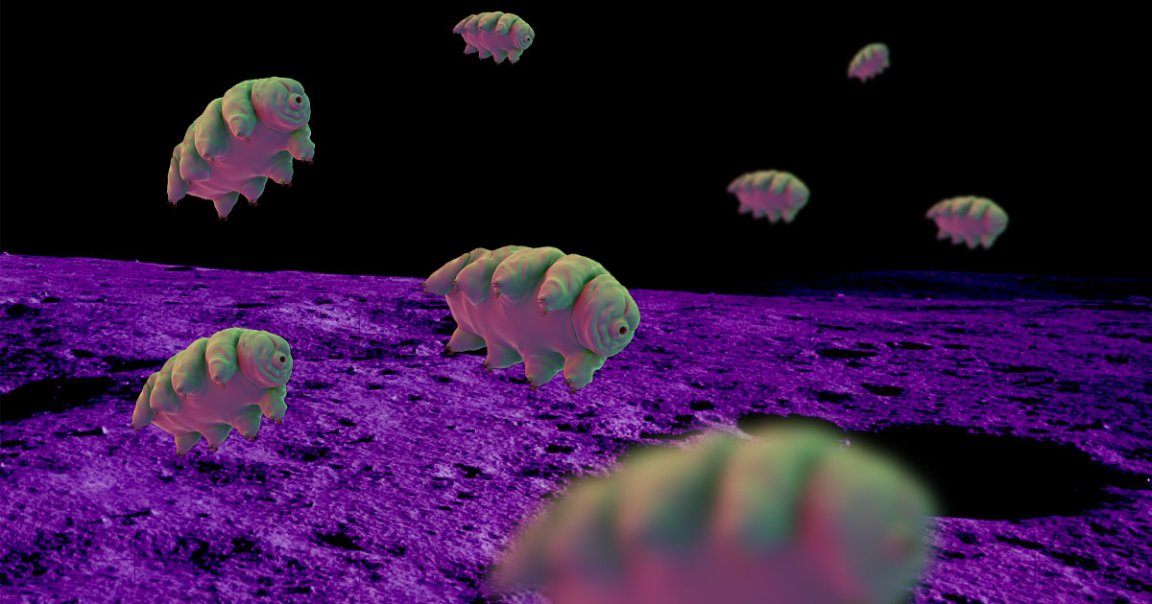
Lunar Life
Israeli lunar lander Beresheet crashed onto the surface of the Moon on April 11 — and it may have left more than a pile of wreckage. It was also carrying thousands of tardigrades, small micro-animals often referred to as “water bears.”
Why it matters: because, according to Wired, tardigrades are the “toughest animal in the known universe” — so resilient that they’ve been found living on the exterior of the International Space Station. In other words, there may now be life on the Moon.
Dehydration Station
Beresheet’s tardigrades probably won’t be crawling around on the lunar surface, because scientists dehydrated them first — though they can be revived for years after the procedure.
As for the harsh climate of the lunar surface, tardigrades can survive temperatures as low as – 328 degrees Fahrenheit — and don’t even have to be dehydrated to do so. Earlier this year, China’s Chang’e-4 lunar probe found that the lowest temperature it measured during the night was – 297 Fahrenheit.
In other words: though it’s not clear how long it might survive, humans may have now accidentally contaminated the Moon with life from Earth.
READ MORE: A Crashed Israeli Lunar Lander Spilled Tardigrades on the Moon [Wired]
More on tardigrades: Water Bears Could One Day Outlive Everything Except the Sun Itself